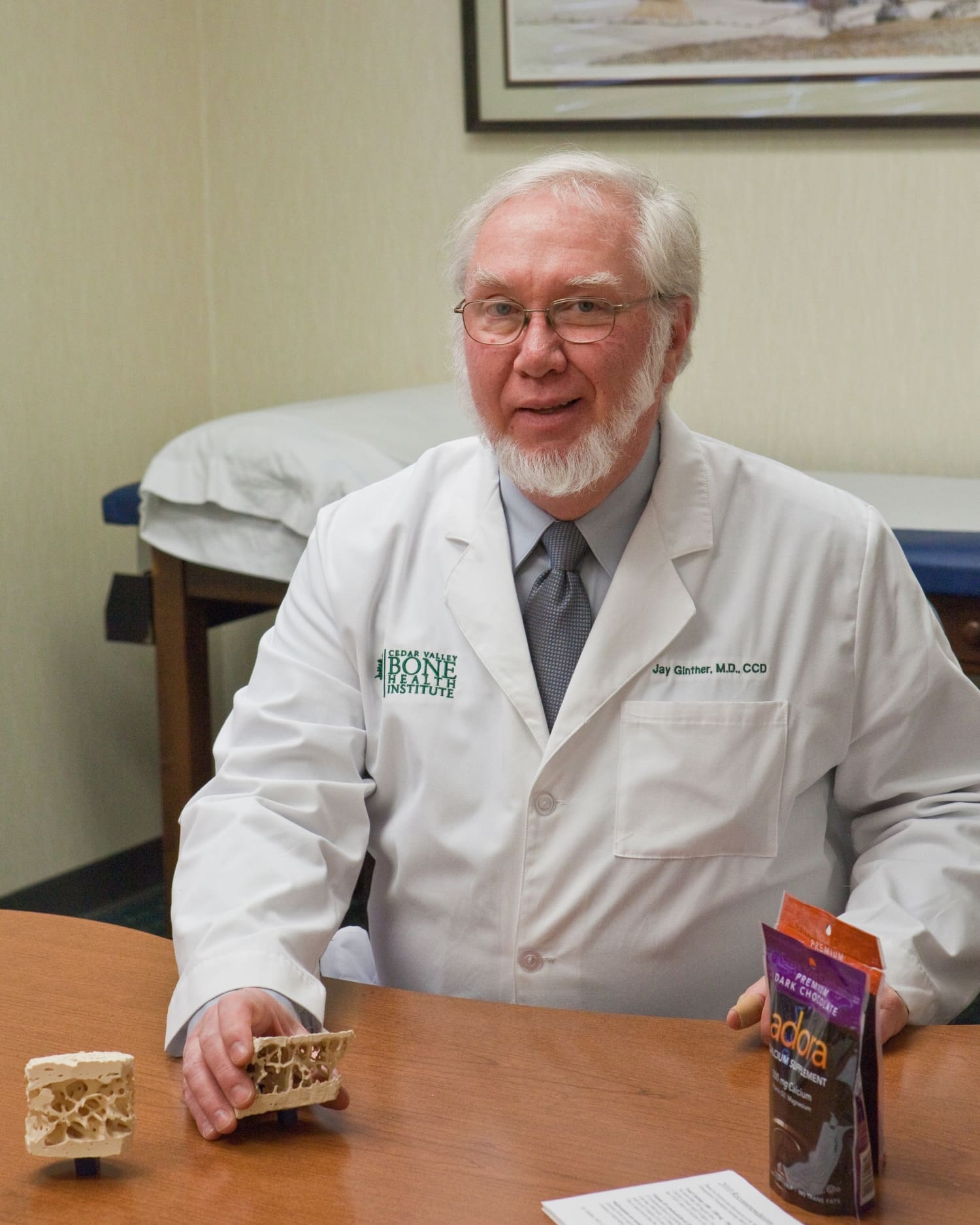In 2004, he had two patients faced with this problem. A drug rep introduced him to Forteo which was advertised as a way to build new bone. After only six weeks, there was noticeable healing on x-ray.
A couple of years later, Dr. Ginther’s Aunt Henrietta, who was in her early 80s, began to trip and fall. This led to a broken wrist, shoulder and ankle. He convinced her internist in New Jersey to put her on Forteo. That was the last time she fell and broke a bone.
Dr. Ginther was a busy orthopedic surgeon with little time for in-depth patient teaching, and he loved being a surgeon. Then in 2008, Dr. Ginther developed a heart condition that prevented him from doing surgery. He still wanted to do patient care, so he used his disability insurance from his heart condition to keep his office going. He had seen a lot of bone that crumbled like “stale English Muffins” (easily cracked and dry) in his years as a surgeon.
Cedar Valley Medical Specialists supported his effort in state-of-the-art preventative medicine.
The first years were tough. No one knew a lot about osteoporosis. He joined the National Osteoporosis Foundation and ISCD where he learned to read DXA scans. (Most DXA readings are done by computers and miss crucial details.). Dr. Ginther, read the scans with in-depth knowledge of bones and years of experience. This combination was unheard of then and is still rare.
He pushed to educate the public on bone health. He held classes at his office, and no one came. He gave talks at nursing homes during lunch and only one or two came. When groups needed a program, he was available. He wrote articles in the Business News section of the Waterloo-Cedar Falls Courier. He scraped by for years, doing only a few DXA scans a week. He started and wrote his own blog.
And gradually his reputation spread.
He presented posters at the National Osteoporosis Federation and the International Society for Clinical Densitometry. He spoke on the work the Bone Health Institute had done and the successes his patients had. In all, he spoke in 19 states and two foreign countries.
Still, he needed to know more, so he joined the American Association of Bone Mineral Research. The first few years, he would study the papers being presented before the meeting and then would have to reread them after. Later, he did his own research and presented his own findings to this organization. His research on vertebral compression deformities in patients with normal bone mineral density was published in Endocrine Practice.
However, there were hurdles. Preventive medicine does not pay. Most osteoporosis programs are subsidized by universities. Dr. Ginther was in private practice. Because he had seen how treatment could help his patients, he went $200,000 into debt, which he gradually worked off as the practice increased. When COVID-19 hit and fewer patients were willing to come to a doctor’s office, he cut his personal benefits and salary to a minimum. This kept his staff on and his office open. Despite this personal change, he continued to meet patient needs daily, often working full time.
His reputation established, he was treated as a peer by national leaders in osteoporosis. He had access to the latest research data. And, he was proud that patients in the Cedar Valley had access to the best possible osteoporosis treatment in the country.
